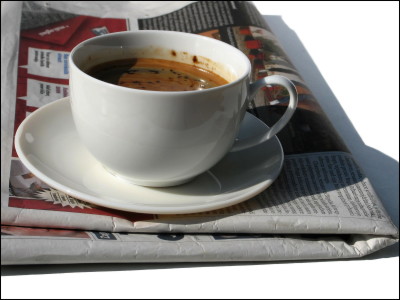Brewing coffee differently affects levels of compounds that affect cholesterol levels, but which method is healthiest?
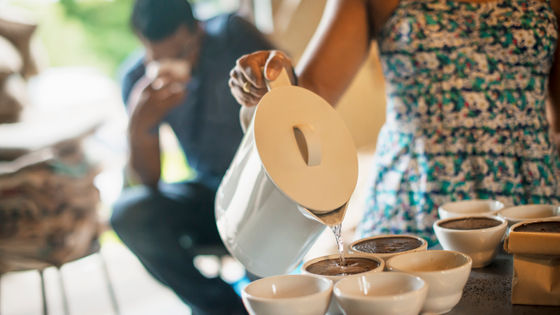
Coffee contains several types of
Cafestol and kahweol concentrations in workplace machine coffee compared with conventional brewing methods - Nutrition, Metabolism and Cardiovascular Diseases
https://www.nmcd-journal.com/article/S0939-4753(25)00087-0/fulltext
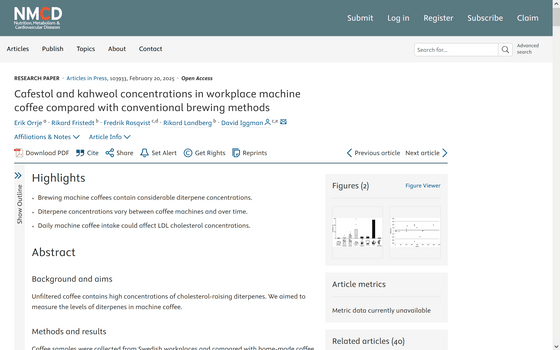
Cholesterol-elevating substances in coffee from machines at work - Uppsala University
How You Make Your Coffee Could Affect Your Cholesterol Levels : ScienceAlert
https://www.sciencealert.com/how-you-make-your-coffee-could-affect-your-cholesterol-levels
According to Swedish researcher Erik Oller and his colleagues, previous studies have shown that boiled coffee contains high amounts of cafestol and kahweol, and people in Northern Europe are advised to avoid consuming this type of coffee.
On the other hand, drip coffee using filters can remove these compounds to some extent. However, no research had been done on the extent to which this was achieved using different brewing methods, so Olier and his colleagues investigated 14 coffee makers and measured how the concentration of these compounds changed depending on the brewing method.
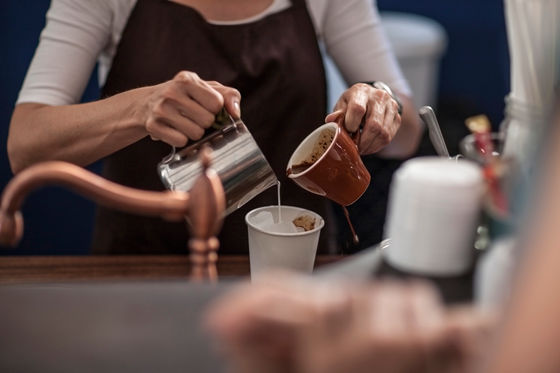
Ollié and his colleagues took two samples from each coffee maker every two to three weeks. They tested medium and dark roast coffee beans ground in five common ways. They tested 11 brewing machines, which mix ground coffee beans with hot water and pass them through a filter, as well as capsule machines, which mix liquid coffee concentrate with hot water and pass it through a filter. For comparison, they also performed similar analyses on other brewing methods, including paper filters, percolators, French presses, and boilers.
The results showed that coffee brewed in a coffee maker had a higher concentration of diterpenes than coffee brewed through a paper filter, but less than boiled coffee.
The chart below shows the difference in cafestol content depending on the brewing method. Espresso has the most after boiled coffee, and French press and percolator are about the same. When it comes to coffee makers, the extraction type has more cafestol than the liquid type. It seems that the cafestol content can also be reduced by putting it through a polyester/acrylic sock.
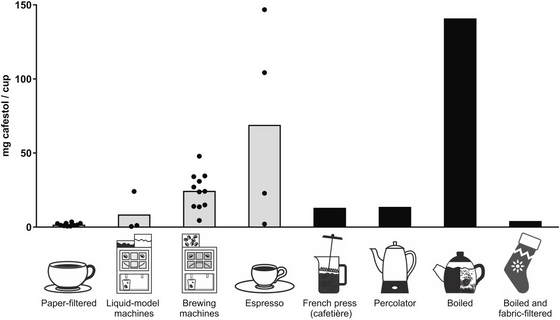
The best result was drip coffee made with a paper filter, with a median cafestol of just 11.5 mg/L and caffeols of 8.2 mg/L, while boiled coffee had higher cafestol and caffeol concentrations of around 940 mg/L and 680 mg/L, respectively.
In addition, when the effect of drinking three cups of coffee a day, five days a week was calculated, it was found that switching from coffee made in a coffee maker to coffee filtered through a paper filter could reduce the relative risk of cardiovascular disease by 13% over five years and 36% over 40 years by lowering LDL cholesterol.

'From this, we can infer that the filtration process is important in preventing an increase in bad cholesterol levels. It is clear that drip-filtered coffee, or coffee that has been filtered by other methods, is preferable for people who drink a lot of coffee every day,' said Orie et al.
Related Posts:
